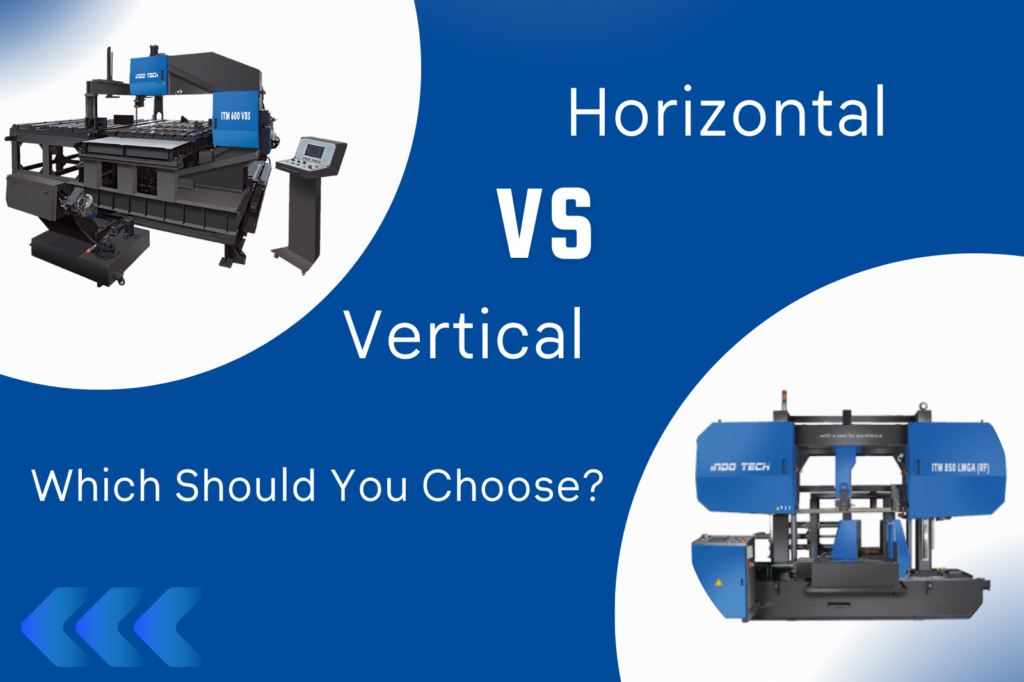Skip to content
When deciding between a horizontal band saw and a vertical band saw, the best choice depends on the types of materials you’ll be cutting, your shop setup, and your specific application needs. Here’s a breakdown of the key differences and factors to consider: Horizontal Band Saws Best For: Cutting Long Stock and Straight Cuts Features: Orientation: Blade is fixed horizontally, and the material is clamped in place.
Operation: The saw arm lowers onto the material to make the cut.
Cutting Style: Ideal for straight cuts, including crosscuts, miters, and cutting long bars or pipes into sections. Advantages: Consistency: Ensures uniform, precise straight cuts.
Ease of Use: Minimal operator involvement after the material is secured.
High Efficiency: Often includes automatic feed systems for repetitive cutting.
Heavy-Duty Applications: Suitable for cutting larger and denser materials like metal or thick stock. Limitations: Limited ability to make intricate or curved cuts.
Takes up more floor space due to its horizontal design. Vertical Band Saws Best For: Versatile Cuts and Shaping Features: Orientation: Blade is mounted vertically, with material typically guided manually along the blade.
Operation: The operator moves the material through the blade for freeform cutting.
Cutting Style: Excellent for curves, intricate designs, and irregular shapes. Advantages: Versatility: Can handle straight, angled, and curved cuts.
Precision Shaping: Ideal for detailed work like notches, patterns, and custom designs.
Compact Design: Smaller footprint compared to horizontal saws.
Wide Material Compatibility: Handles wood, plastics, and metals effectively. Limitations: Operator skill is crucial for accuracy.
Slower cutting speeds for long, straight sections compared to horizontal saws. Factors to Consider Type of Work:Choose a horizontal saw for straight, repetitive cuts (e.g., production work, metal fabrication).
Opt for a vertical saw for detailed, creative, or versatile cutting tasks (e.g., woodworking, custom shapes).
Material:Horizontal saws excel with heavy-duty materials like thick metals.
Vertical saws handle a broader range of materials, especially for intricate tasks.
Space Availability:Horizontal saws require more floor space, whereas vertical saws are more compact.
Budget:Horizontal saws, particularly those with automated features, tend to be more expens Conclusion Horizontal Band Saw: Ideal for industrial or production environments focusing on straight, heavy-duty cuts.
Vertical Band Saw: Best for creative or precise projects requiring versatility and intricate shaping.
Post navigation


